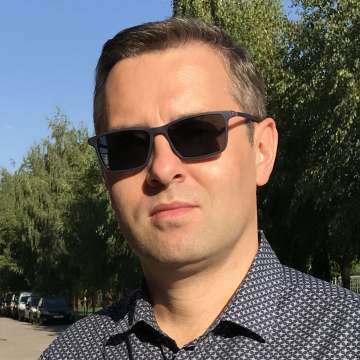Ta strona używa cookies
Ze względu na ustawienia Twojej przeglądarki oraz celem usprawnienia funkcjonowania witryny umcs.pl zostały zainstalowane pliki cookies. Korzystając ze strony wyrażasz zgodę na ich używanie. Możesz to zmienić w ustawieniach swojej przeglądarki.
ORCID: https://orcid.org/0000-0002-1476-9748
SCOPUS Author Identifier: 6701451663
PhD in Theoretical Physics. Currently holds the position of Assistant Professor at the Department of Cybersecurity and Computational Linguistics at Maria Curie-Skłodowska University in Lublin (UMCS).
My passion lies in interdisciplinary research at the intersection of computer science and biotechnology. In my scientific work, I focus primarily on exploring the possibilities of using DNA as a key element in modern security systems. I am a researcher specializing in advanced technologies for object marking using DNA. My work concentrates on designing systems that combine biotechnology and computer science for the purposes of authentication, identification, and protection of ownership for physical objects.
A key area of my research involves developing tamper-resistant marking methods based on the unique properties of DNA, as well as designing cryptographic algorithms supporting data security in systems utilizing DNA tagging.
Additionally, I conduct research on cybersecurity awareness, particularly in the context of the use of AI technologies by school-age youth.
As a university teacher, I conduct courses at UMCS, the Polish-Japanese Academy of Information Technology (PJATK), and Kozminski University. I have many years of teaching experience and I am the author of numerous educational materials in the field of cybersecurity, cryptography, and programming.
Publications:
1. Kuzdraliński Adam, Miśkiewicz Marek Błażej, Szczerba Hubert, Mazurczyk Wojciech, Nivala Jeff, Księżopolski Bogdan Marcin: Unlocking the potential of DNA-based tagging: current market solutions and expanding horizons, Nature Communications, vol. 14, nr 1, 2023, Numer artykułu: 6052, s. 1-7, DOI:10.1038/s41467-023-41728-2
2. Księżopolski Bogdan Marcin, Mazur Katarzyna, Miśkiewicz Marek Błażej, Rusinek Damian: Teaching a Hands-On CTF-Based Web Application Security Course, Electronics (Switzerland), Multidisciplinary Digital Publishing Institute (MDPI), vol. 11, nr 21, 2022, s. 1-21, DOI:10.3390/electronics11213517
3. Miśkiewicz Marek Błażej, Kuzdraliński Adam, Rusinek Damian, Księżopolski Bogdan Marcin: DNA Based Cryptographic Key Storage System With a Simple and Automated Method of Primers Selection, W: Selected Topics in Applied Computer Science / Bylina Jarosław Marcin (red.), vol. I, 2021, Uniwersytet Marii Curie-Skłodowskiej w Lublinie, ISBN 978-83-227-9530-9, s. 111-127
4. Księżopolski Bogdan Marcin, Rusinek Damian, Miśkiewicz Marek Błażej, Wróblewska Aneta Maria: Hands-on Cybersecurity Labs in online learning, 2021
5. Księżopolski Bogdan Marcin, Miśkiewicz Marek Błażej: Cryptographic keys management system based on DNA strands, Annals of Computer Science and Information Systems, Polish Information Processing Society, vol. 18, nr 1, 2019, s. 231-235, DOI:10.15439/2019f313
6. Góźdź Andrzej, Miśkiewicz Marek Błażej, Dudek Jerzy: Tensor formalism for rotational and vibrational nuclear motions with discrete symmetries: Rotational terms, International Journal of Modern Physics E-Nuclear Physics, vol. 17, nr 1, 2008, s. 272-275, DOI:10.1142/S0218301308009793
7. Góźdź Andrzej, Miśkiewicz Marek Błażej, Olszewski A.: Remarks on symmetries of generalized rotor space, International Journal of Modern Physics E-Nuclear Physics, vol. 13, nr 1, 2004, s. 37-45, DOI:10.1142/S0218301304001709
8. Miśkiewicz Marek Błażej, Góźdź Andrzej, Dudek Jerzy: Quantum rotational spectra and classical rotors, International Journal of Modern Physics E-Nuclear Physics, vol. 13, nr 1, 2004, s. 127-132, DOI:10.1142/S0218301304001849
9. Dudek Jerzy, Góźdź Andrzej, Schunck N., Miśkiewicz Marek Błażej: Nuclear Tetrahedral Symmetry: Possibly Present throughout the Periodic Table, Physical Review Letters, American Physical Society, vol. 88, nr 25, 2002, s. 4, DOI:10.1103/PhysRevLett.88.252502

